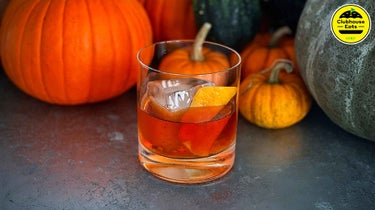
The joys of Scotch are many! Here’s how to get started.
Jeffrey Westbrook
There’s perhaps no more intimidating spirit than Scotch.
The word alone conjures images of tweedy, stiff-upper-lip types sitting in dusky, lamp-lit pub corners, perhaps with a pipe or worn newspaper nearby.
If wine and liquors like vodka and rum are the golden retrievers of alcohol — friendly, comfortable and universally liked — Scotch is like the Doberman, a beautiful and refined specimen, to be sure, but also seemingly aloof and necessitating great effort to wrangle.
Time to get over it, for peat’s sake!
Because, while the spirit does indeed contain a pleasurable depth and complexity, it’s important to remember that, at its core, it’s simply whisky made in Scotland — not some elite nectar that only a few have the capacity to unravel.
If you love wine, you’re already a great candidate for Scotch appreciation, since anyone who enjoys a variety of flavor profiles will feel at home with Scotch and its many joys. And really, what better way to celebrate the 150th Open Championship at St. Andrews than by sipping a dram of golden elixir from the home of golf itself?
If you’re a Scotch novice, there are a few basics to keep in mind: First, all Scotches are whiskies but not all whiskeys are Scotches. Scotch is whisky (notice the absence of the e) distilled in Scotland and nowhere else. Another thing that sets it apart is the fact that Scotch is made from a single type of malted grain and aged in an oak barrel. Thanks to the many varieties of oak, this allows for the creation of multiple flavor possibilities. Some whisky blends are even aged in one type of barrel and then moved, or “finished,” in another type, intensifying their respective flavors.
By contrast, American bourbon, which is whiskey that is produced primarily in Kentucky, is composed of at least 51 percent corn grain, while “regular” whiskeys are composed of a mixture of barley, rye, corn and wheat.
Guy Sporbert is a certified whisky specialist and the senior Scotch ambassador at the Westin Kierland in Scottsdale, Ariz.
Sporbert presides over the resort’s Scotch Library, which boasts a collection of more than 175 single malts, 30 blends and other rare bottles from Scotland, including a 62-year-old Macallan.
“You don’t need to have historical knowledge or perspective about Scotch to appreciate it,” Sporbert said recently on the phone. “You just have to be willing to try it.”
So, what’s a good starting point for a Scotch newbie? Sporbert recommends going with a blend.
“Blended Scotches are created to be very approachable,” he said. “If you find yourself liking them, find out what malt whiskies are in there and use that as a guide to gravitate toward other varieties or even single malts.”
Brian Cox is the vice president at Dewar’s Scotch Whisky, North America, and agrees that Scotch is just as accessible as most other whiskeys, and that people shouldn’t be shy about enjoying it any way they please.
“People always ask me, ‘What’s the best way to enjoy Scotch whisky?’ Well, it’s a cliché answer, but your way is the best way,” Cox said on a recent call. “I think people overestimate the formality of Scotch whisky, generally. But there’s a great deal to explore and discover. And if you like it, then, by extension, there’s a lot to enjoy there.”
Both Cox and Sporbert were quick to emphasize that though older Scotches tend to seem like the highest quality, that’s not always the case. “Older isn’t necessarily better,” Sporbert said, “just more expensive.” Another common misconception about Scotch? That adding water is akin to slathering ketchup on a filet mignon. Turns out, it’s quite the opposite.
A bit of water or ice allows the Scotch to breathe and helps break up the chemical structure of the outflow.
“People think water dilution is bad. No,” said Cox. “Actually, a bit of water helps unleash and open up the nose and the bouquet of flavors.”
Speaking of the nose, smell is just one element of total Scotch enjoyment. To fully appreciate the experience, Cox recommends involving each of your senses, starting with the pour. Take a look at that golden liquid in the glass. Hold it up to the light and appreciate its refraction and shape. Then, take a big, deep whiff, inhaling all the aromas. Finally, have a sip and note the initial flavors spreading across your palate.
As you swallow, you’ll experience a new set of flavors—the finish—and a delicious warming effect as the liquid travels down your throat. Heavenly!
Regardless of the age of your Scotch, or whether you enjoy it straight up or on ice, there is one thing Sporbert wants new Scotch drinkers to know.
“Anybody in the whisky industry will tell you to enjoy your whisky however you want to enjoy it,” he said. “If you want to have it on the rocks, have it on the rocks. Have it neat. Have water, don’t have water. Add soda to it! Don’t put so many rules on having a grand time.”
Standout Scotch
Highland Park 18, $165
Extremely wellbalanced. Juicy, with a nice, easy smoke. Nutty, with notes of orchard fruit, honey and a touch of oak.
Aberfeldy 18, $134
A very robust and honeyed whisky that is finished in red wine barrels from France, giving it a full and fruity send-off.
Oban 14, $98
This Western Highland whisky has some maritime qualities to it: very light smoke, fruity, with some vanilla.
Ardbeg 10, $65
Complex for a 10-year-old and a great one for your cabinet. Notes of sooty smoke, sweet vanilla, citrus and chocolate.
Glenmorangie The Lasanta, $67
This “finished whisky” spends 10 years maturing in American oak, then two more in oloroso sherry. Notes of vanilla and fruit.
Glenfarclas 25, $193
A sherried whisky from a family-owned distillery. Outstanding value for its age. Notes of chocolate, sweet, dark fruit, a nice touch of oak and baking spices.
Dewar’s 15, $55
Super versatile and enjoyable on its own or in a mixed cocktail. Overall flavor is one of honey and light fruit.
The Macallan Double Cask 15, $153
Macallan is a nice, oily whisky. It always has a good amount of oak in it and is somewhat chewy. Notes of sherry, dried fruit and vanilla.










